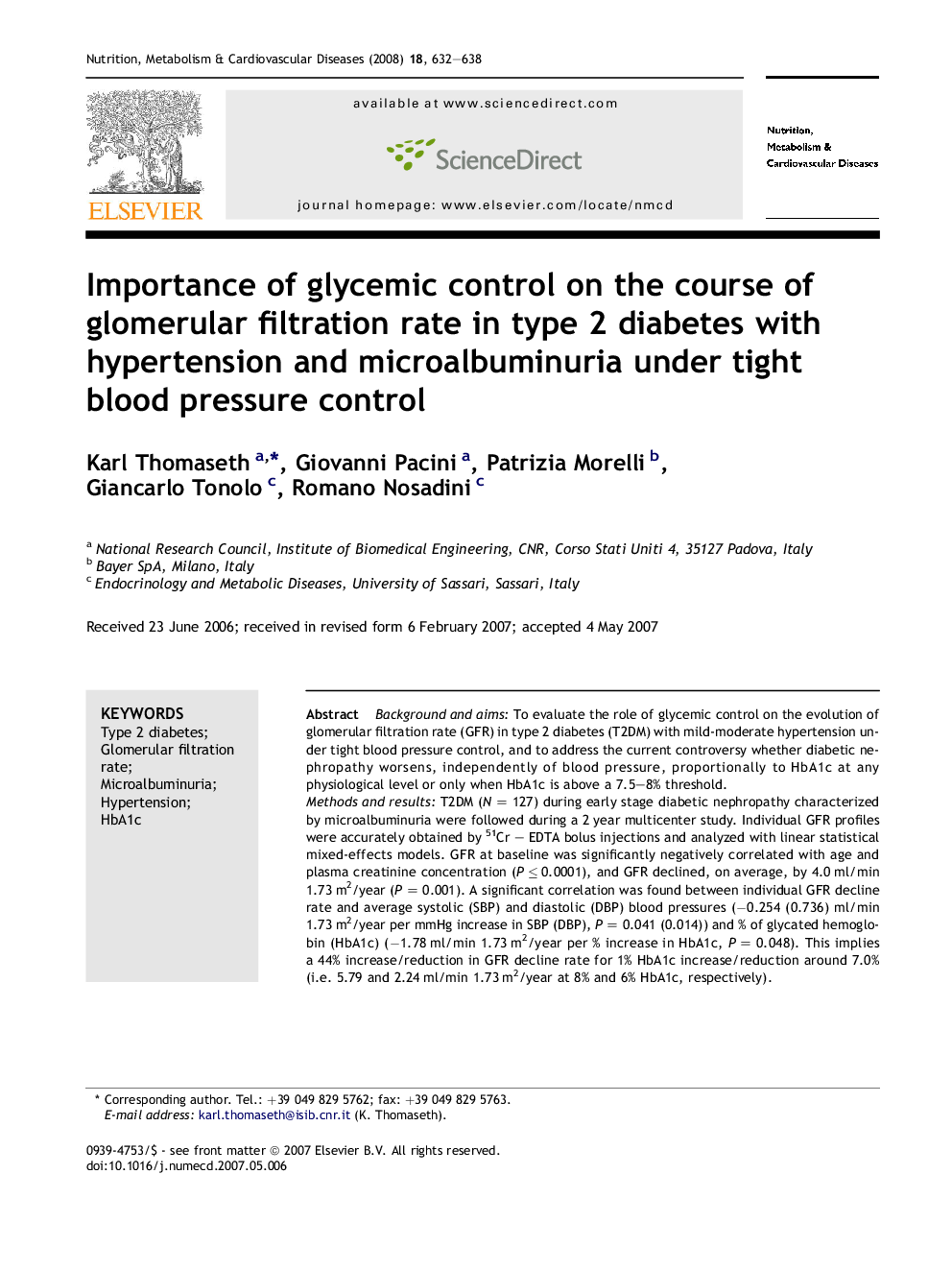| Article ID | Journal | Published Year | Pages | File Type |
|---|---|---|---|---|
| 3003163 | Nutrition, Metabolism and Cardiovascular Diseases | 2008 | 7 Pages |
Background and aimsTo evaluate the role of glycemic control on the evolution of glomerular filtration rate (GFR) in type 2 diabetes (T2DM) with mild-moderate hypertension under tight blood pressure control, and to address the current controversy whether diabetic nephropathy worsens, independently of blood pressure, proportionally to HbA1c at any physiological level or only when HbA1c is above a 7.5–8% threshold.Methods and resultsT2DM (N = 127) during early stage diabetic nephropathy characterized by microalbuminuria were followed during a 2 year multicenter study. Individual GFR profiles were accurately obtained by 51Cr – EDTA bolus injections and analyzed with linear statistical mixed-effects models. GFR at baseline was significantly negatively correlated with age and plasma creatinine concentration (P ≤ 0.0001), and GFR declined, on average, by 4.0 ml/min 1.73 m2/year (P = 0.001). A significant correlation was found between individual GFR decline rate and average systolic (SBP) and diastolic (DBP) blood pressures (−0.254 (0.736) ml/min 1.73 m2/year per mmHg increase in SBP (DBP), P = 0.041 (0.014)) and % of glycated hemoglobin (HbA1c) (−1.78 ml/min 1.73 m2/year per % increase in HbA1c, P = 0.048). This implies a 44% increase/reduction in GFR decline rate for 1% HbA1c increase/reduction around 7.0% (i.e. 5.79 and 2.24 ml/min 1.73 m2/year at 8% and 6% HbA1c, respectively).ConclusionsThis study demonstrates that, despite tight blood pressure control, an accurate glycemic control till very low patterns of HbA1c (from 10–11% to 5–6%) is needed to delay the progression of GFR decay in Mediterranean T2DM in south Europe with microalbuminuria.
